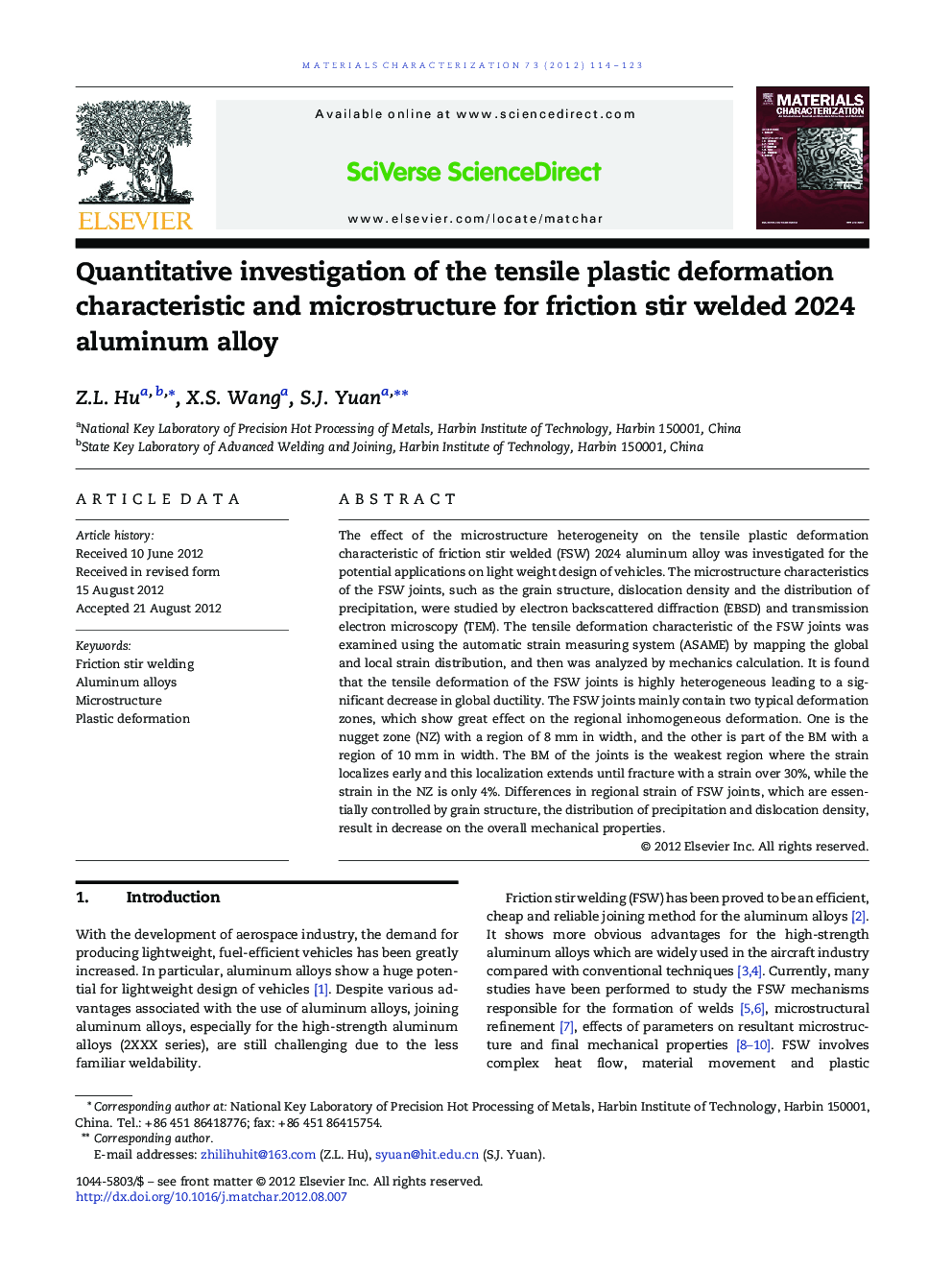| کد مقاله | کد نشریه | سال انتشار | مقاله انگلیسی | نسخه تمام متن |
|---|---|---|---|---|
| 1571323 | 1514414 | 2012 | 10 صفحه PDF | دانلود رایگان |

The effect of the microstructure heterogeneity on the tensile plastic deformation characteristic of friction stir welded (FSW) 2024 aluminum alloy was investigated for the potential applications on light weight design of vehicles. The microstructure characteristics of the FSW joints, such as the grain structure, dislocation density and the distribution of precipitation, were studied by electron backscattered diffraction (EBSD) and transmission electron microscopy (TEM). The tensile deformation characteristic of the FSW joints was examined using the automatic strain measuring system (ASAME) by mapping the global and local strain distribution, and then was analyzed by mechanics calculation. It is found that the tensile deformation of the FSW joints is highly heterogeneous leading to a significant decrease in global ductility. The FSW joints mainly contain two typical deformation zones, which show great effect on the regional inhomogeneous deformation. One is the nugget zone (NZ) with a region of 8 mm in width, and the other is part of the BM with a region of 10 mm in width. The BM of the joints is the weakest region where the strain localizes early and this localization extends until fracture with a strain over 30%, while the strain in the NZ is only 4%. Differences in regional strain of FSW joints, which are essentially controlled by grain structure, the distribution of precipitation and dislocation density, result in decrease on the overall mechanical properties.
► Microstructure heterogeneity of welds on tensile deformation behavior is studied.
► The welds contain two typical deformation zones, affecting the global ductility.
► Regional strain of welds is controlled by grain structure and dislocation density.
► Theoretical calculation is in good agreement with experimental result.
Journal: Materials Characterization - Volume 73, November 2012, Pages 114–123